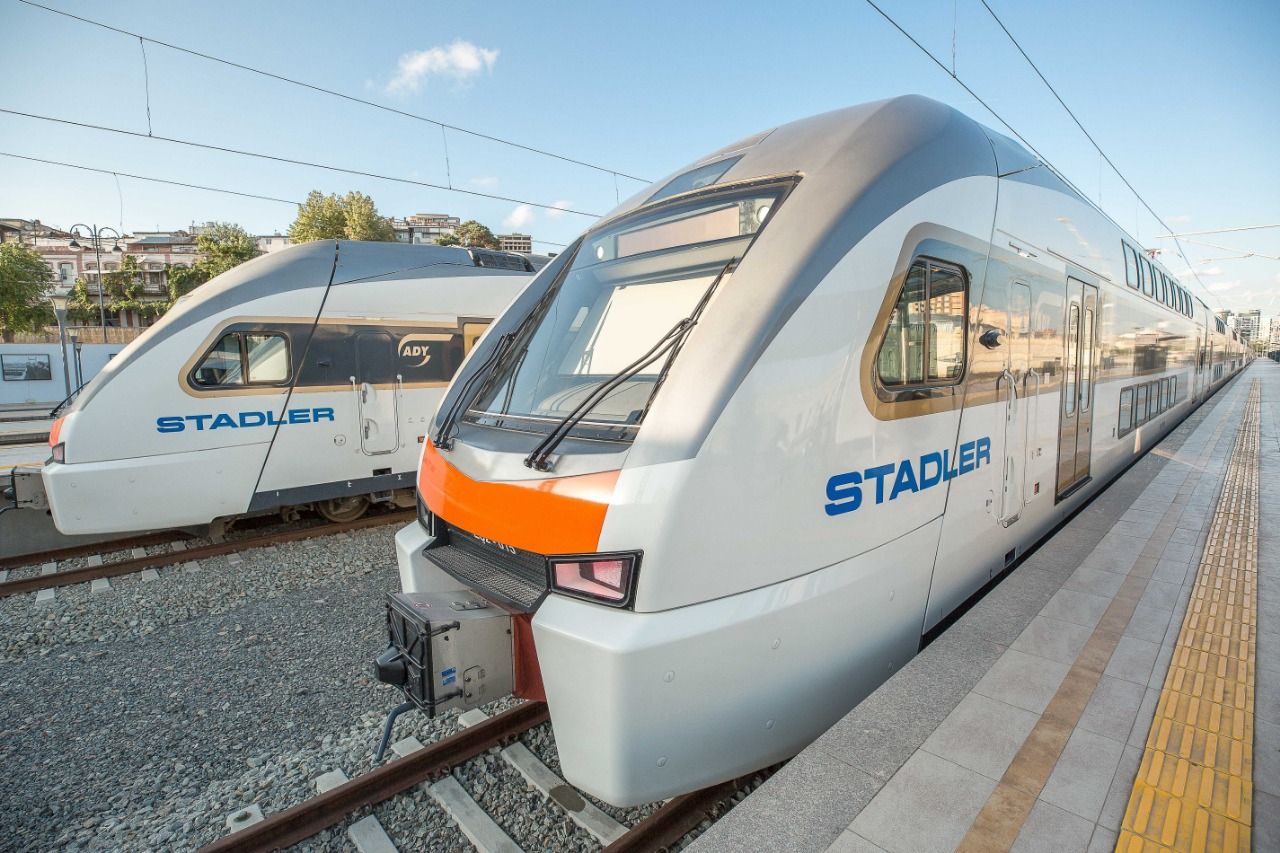Azerbaijan ranked high in terms of the efficiency of train services in the Global Competitiveness Report 2019 of the World Bank Group scoring the best result both in the South Caucasus and the Caspian Sea regions.
According to the report, Azerbaijan came in at number 11 among 141 countries for the overall condition of train services with 70.8 points awarded based on such criteria as frequency, punctuality, speed, and price. Georgia and Armenia – Azerbaijan’s neighbors in South Caucasus – ranked 43 and 67, while Caspian’s Russia, Kazakhstan, and Iran ranked 17, 33, and 52, respectively.
Meanwhile, Azerbaijan managed to outpace some of the world’s developed countries, such as the United States (12), France (15), the United Kingdom (31), Norway (28), and Germany (28). Japan is the world’s number one country offering the best train services, while Lesotho’s railway infrastructure was named the worst.
Established in 1878, the railway system in Azerbaijan is the busiest and largest in the South Caucasus region measuring over 2,900 kilometers. The network of the national railroad grid includes both internal and international lines, such as Baku-Gazakh, Baku-Astara, Baku-Moscow, Baku-Kyiv, and Baku-Tbilisi-Kars railways.
The creation of the railway system in Azerbaijan was closely associated with the development of the country’s oil industry, which is considered the world’s oldest. Back in the 1870s, transportation of the crude oil in wooden barrels and fur-made sacks was very costly and time-consuming, simultaneously slowing down the development of the most lucrative industry. This has ultimately led to the construction of the first 20-kilometer-long railroad stretching from Baku to the oil wells located in the Surakhani suburb in 1878-1880s.
The development of the railway infrastructure gained significant momentum in the 19th and 20th centuries, to evolve from Baku to remote districts in almost all corners of the country, as well as to international destinations. In 1879-1884, famous entrepreneurs from Germany, the Siemens Brothers financed the construction of a railway connecting copper fields to the copper smelting plant in the Gadabay district in the west of Azerbaijan. The non-stop development of the national railway grid has led to connecting Baku to Georgia’s Black Sea coastal port city of Batumi and Derbent city of Russia in the early 1900s.
The modern-day railway infrastructure helps Azerbaijan’s officials take advantage of the country’s geographical location to position the country as a vital segment to massive transcontinental routes such as the International North-South Transport Corridor and the Belt and Road Initiative of China. The government in Baku spares no effort to upgrade both the fleet and technical capabilities of the national railway. Currently, 60 percent of the overall 2,910-kilometer railway grid is electrified. The obsolete Soviet-era cars are replaced with cutting-edge coaches purchased from leading global manufacturers, Alstom and Stadler.
The Baku-Tbilisi-Kars (BTK) railway, launched in October 2017, is considered the most pivotal link in the modern railway grid of Azerbaijan.
The 846-kilometer (526-mile) line runs from Baku to Tbilisi in Georgia and ends in the far eastern Kars city of Turkey, where it connects to the Turkish railway grid to span the Asian and European marketplaces as the shortest and most reliable link between the two continents. The average shipping time from China to Europe decreases to 15-20 days from what has traditionally been about 40-45 days thanks to the BTK. Shipments on the route are projected to reach 3-5 million tons in 2020, 6-8 million tons in 2022, and 10 million tons in 2027. It is expected that by 2034, it will transport 3 million passengers and 17 million tons of cargo. BTK is considered a potential integral part of the Belt and Road Initiative, Beijing’s ambitious multi-modal route which is anticipated to run along 60,000 km (37,000 mi) from China to as far as Portugal in Europe.
To facilitate the realization of the International North-South Transport Corridor, in December 2017, Azerbaijan put Astara-Astara line online, which forms a part to the 7,200 km (4,474 mi) multi-modal network of rail, road, and sea routes that will carry goods from South and Central Asia to Finland in Europe. The Astara-Astara railroad runs 8.3 km (5.2 mi) in Azerbaijan down to the border with Iran, from where it extends 1.4 km (0.87 mi) to Iran’s port city of Astara. The continuation of the line in Iran is the Gazvin-Rasht-Astara railway.







 Iran's senior military leaders described the drone and missile attack on Israel on April 14 night as “successful".
Iran's senior military leaders described the drone and missile attack on Israel on April 14 night as “successful".
 The number of evacuees from flooded areas in Kazakhstan has reached 97,852 people, including about 32,856 children since March 27.
The number of evacuees from flooded areas in Kazakhstan has reached 97,852 people, including about 32,856 children since March 27.
 Iranian President Ebrahim Raisi warned Israel that it would face a "real and extensive" response if it makes any "mistake" following Tehran’s missi...
Iranian President Ebrahim Raisi warned Israel that it would face a "real and extensive" response if it makes any "mistake" following Tehran’s missi...



